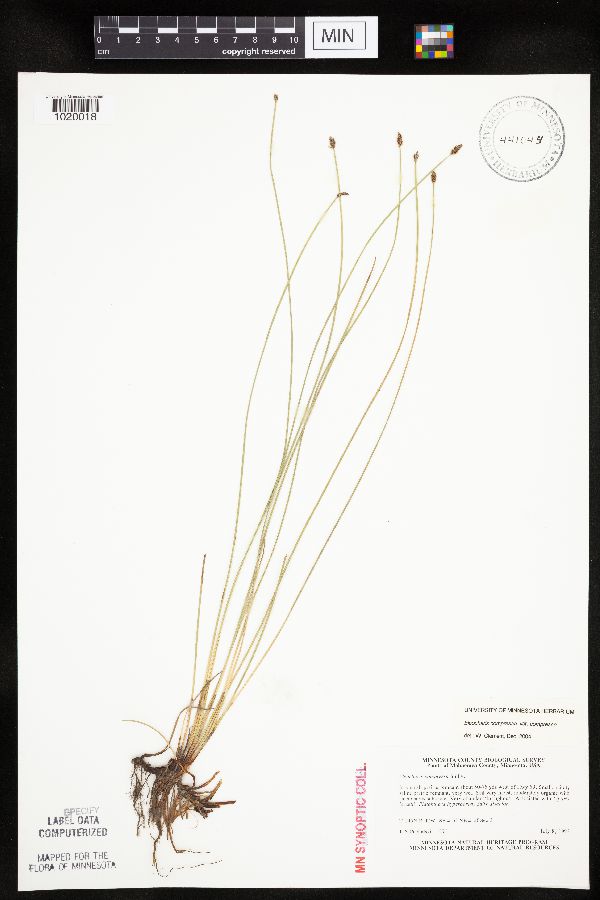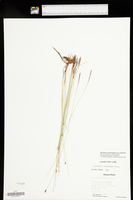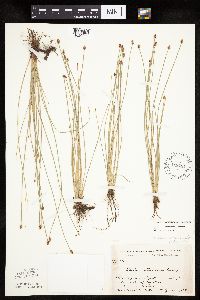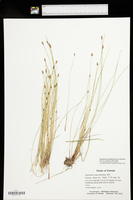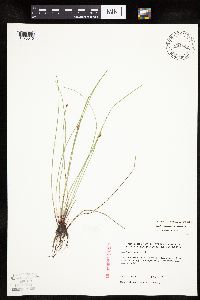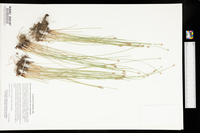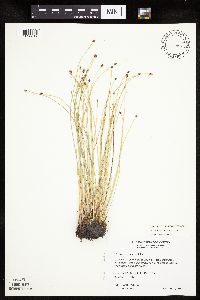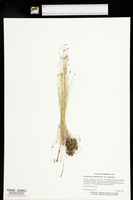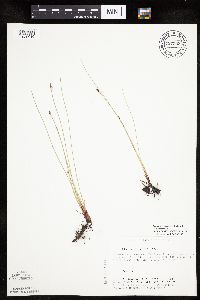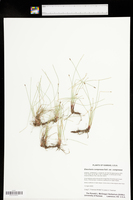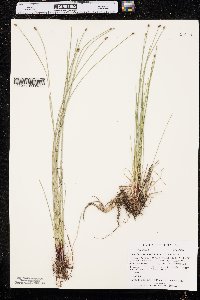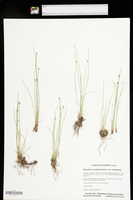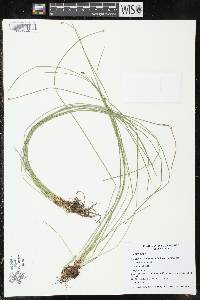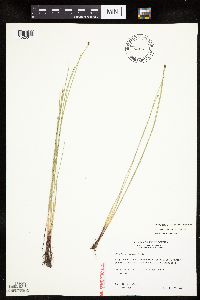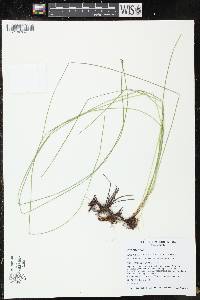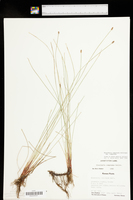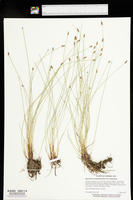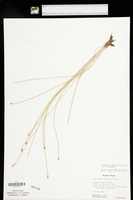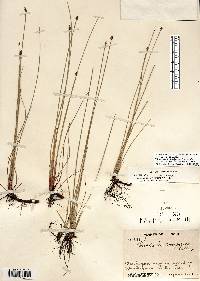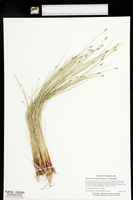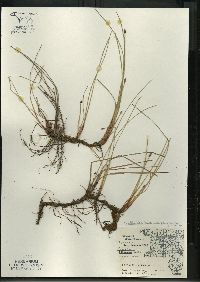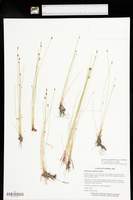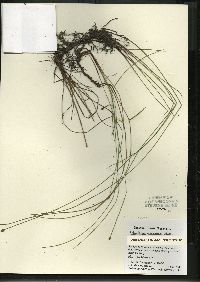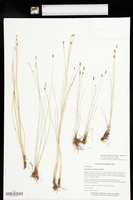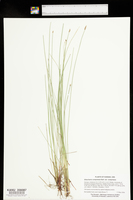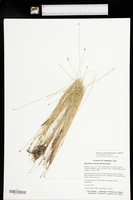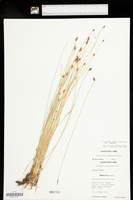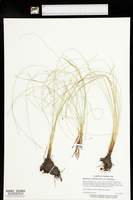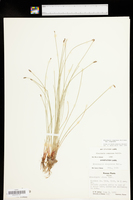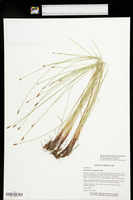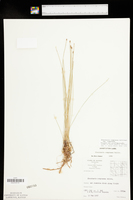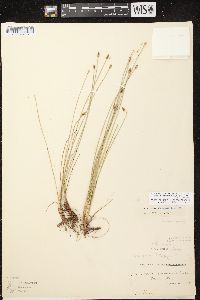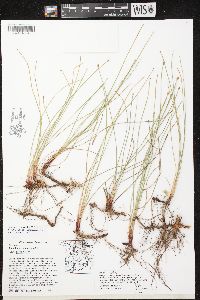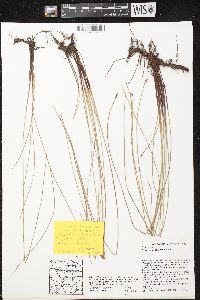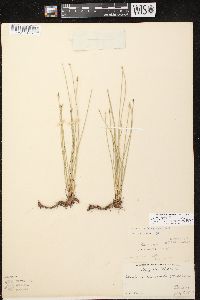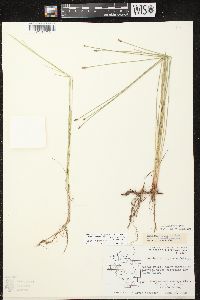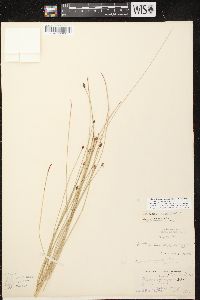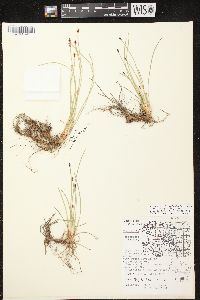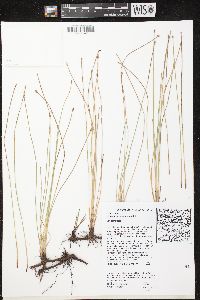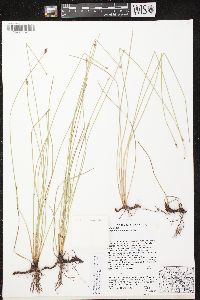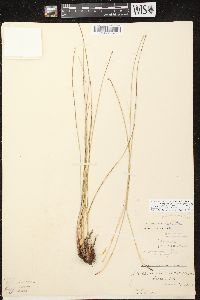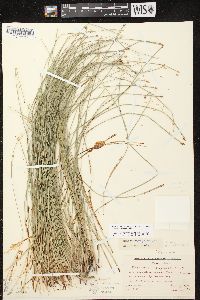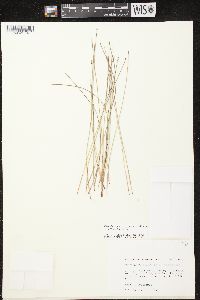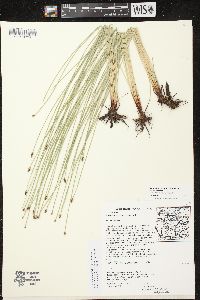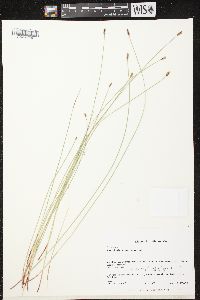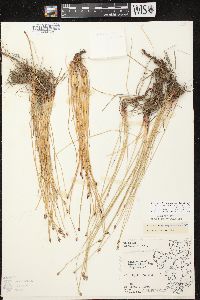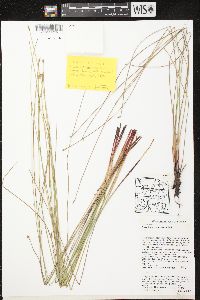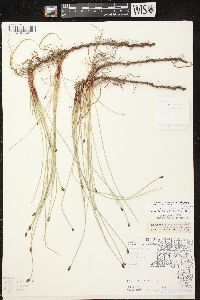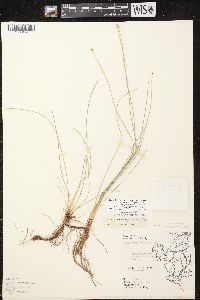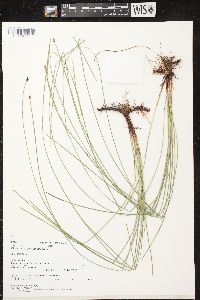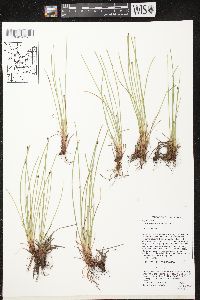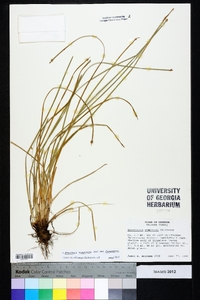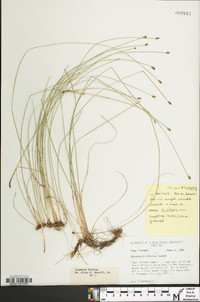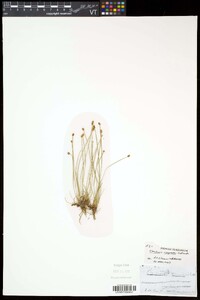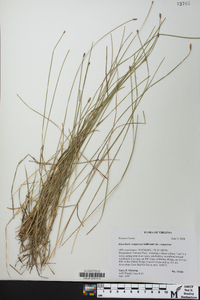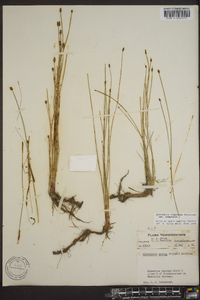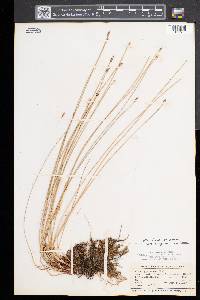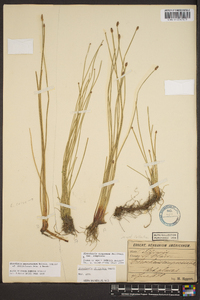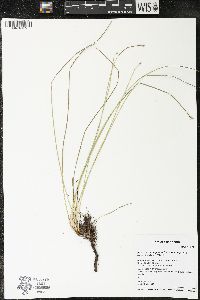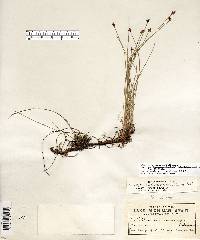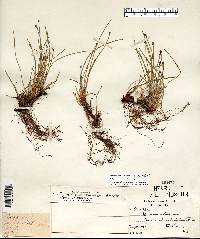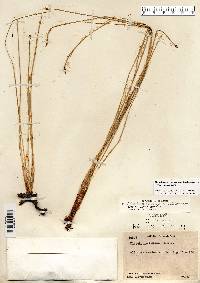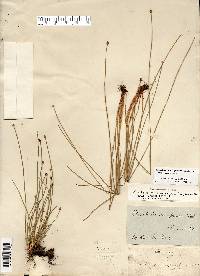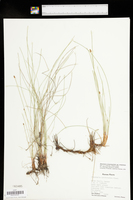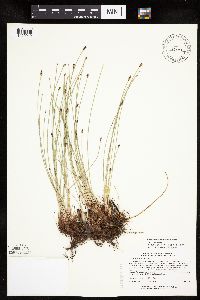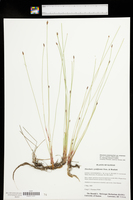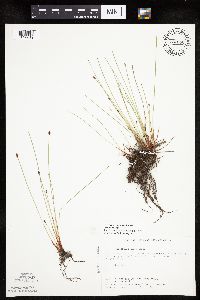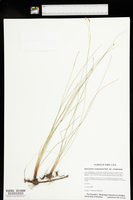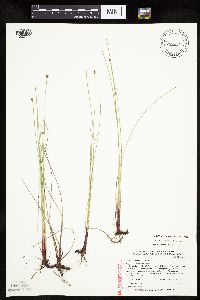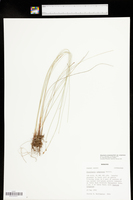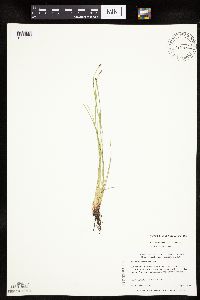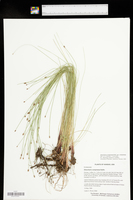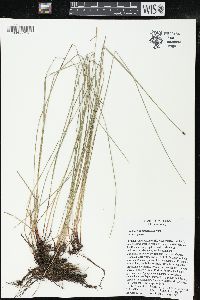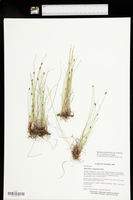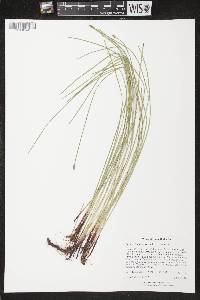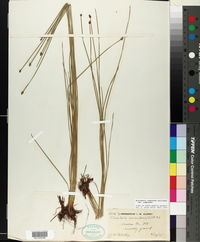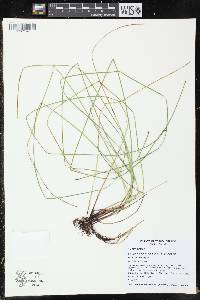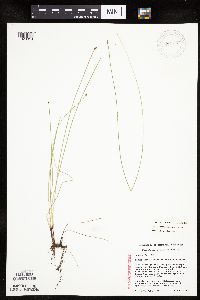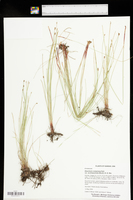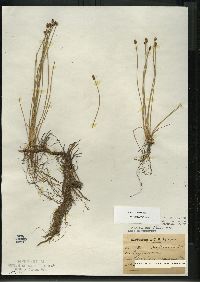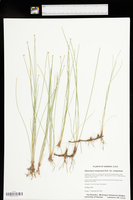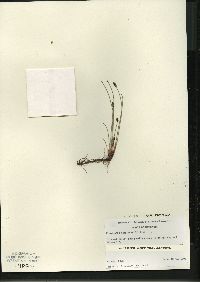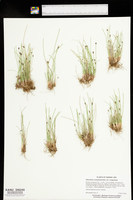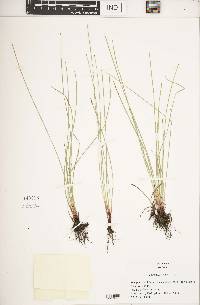Eleocharis compressa var. compressa
|
|
|
|
Family: Cyperaceae
Flat-Stem Spike-Rush
|
Culms compressed, 2-5 times as wide as thick, 0.5-1.8 mm wide. Distal leaf sheaths without tooth. 2n = 24. Fruiting late spring-winter. Damp soil to shallow water of seasonally wet seeps and depressions in calcareous grasslands, meadows, limestone and dolomite barrens, glades, fens, ditches, waste places; 0-2100 m; Ont., Que.; Ala., Ark., Colo., D.C., Ill., Ind., Iowa, Kans., Ky., Md., Mich., Minn., Miss., Mo., Nebr., N.Y., Ohio, Pa., S.Dak., Tenn., Va., W.Va., Wis. Perennial herb with slender rhizomes, mat-forming 8 - 45 cm tall Leaves: reduced to bladeless sheaths, basal, two per culm, margins fused and enclosing culm, not splitting, red basally, reddish brown at the apex, papery, with a blunt to nearly truncate (cut straight across) apex. Flowers: minute, spirally arranged on the axis of the spikelet, lacking sepals and petals, with zero to five bristles, subtended by a scale. Bristles (when present) straw-colored, equal to or shorter than the achene. Stamens three, exserted. Anthers orangish brown to yellow, to 2 mm long. Pistil one. Style three-cleft, or some two-cleft. Fruit: a one-seeded achene, yellowish brown to dark brown, 1 - 1.5 mm long, to 0.8 mm wide, reverse egg-shaped to reverse pear-shaped, three-angled (nearly equilaterally to compressed), some convex on both sides, finely wrinkled, sometimes finely latticed. Tubercle brown to whitish, tiny, pyramidal, often depressed. Seed with a thin, non-adherent wall. Culm: unbranched, 8 - 45 cm long, 0.5 - 1.8 mm wide, compressed to two to five times as wide as thick, often twisted, two- to twelve-ridged, spongy, enclosed basally by two fused sheaths. Spikelets: solitary, 4 - 8 mm long, 2 - 4 mm wide, egg-shaped with a pointed apex, with 20 to 60 floral scales. Scales spirally arranged and overlapping, brown to dark brown with a paler midrib, sometimes colorless or straw-colored, hyaline towards the apex, 2 - 3 mm long, 1 - 1.5 mm wide, egg-shaped with a pointed apex, some becoming two-cleft or torn-looking with age. Similar species: No information at this time. Flowering: late April to mid-June Habitat and ecology: Occasional, especially in the southwestern sector of the Chicago Region. Found in moist to mesic areas of calcareous prairies. Occurence in the Chicago region: native Etymology: Eleocharis comes from the Greek words heleios, meaning "dwelling in a marsh," and charis, meaning grace. Compressa means compressed. Author: The Morton Arboretum From Flora of Indiana (1940) by Charles C. Deam I have only three specimens from Indiana and these are from a wide range of distance and kinds of habitats. The Ohio County specimen was found on the slope of the bank of the Ohio River, the specimen from Tipton County is from a wet, prairie habitat along the railroad just west of Goldsmith, and the specimen from Wabash County was found on the border of a small lake. It has been reported from Lake and St. Joseph Counties, but I have not seen the specimens. ...... Indiana Coefficient of Conservatism: C = 10 Wetland Indicator Status: FACW |

